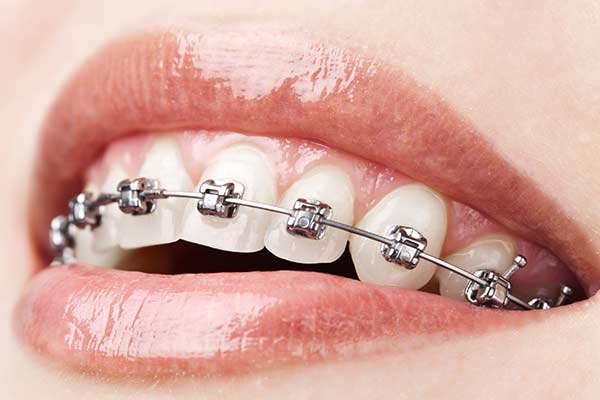Traditional Braces

There have been countless changes and advances in orthodontic treatment in the past decade, but traditional braces remain the most popular solution because they’re cost-effective and they work well. That said, don’t think that all those advances in technology have left traditional braces in the dust—today’s braces are better than ever, with lower profile brackets for a more comfortable fit and advanced archwires that move teeth more quickly and predictably. You can’t go wrong choosing traditional braces.
Advantages of Traditional Braces
Traditional metal braces are the gold standard in the field of orthodontics. Here’s why they continue to be popular with our patients:
- Traditional braces work better for complicated orthodontic issues. Aligner technology has advanced over the years, but they still can’t treat the most complex cases. Metal braces are a solution that works for every patient.
- Traditional braces work all day, every day. Aligners only work when patients wear them. Braces can’t be removed, so they work to straighten your teeth all day long. When patients do not wear their aligners as directed, their treatment time may be lengthened.
- Traditional braces are a more affordable solution. Any dental insurance plan that covers orthodontic treatment will cover the cost of traditional metal braces, but not all plans cover alternative treatments. If you don’t have dental insurance and you’re paying out-of-pocket, metal braces are less expensive than all other options.
- Traditional braces are more efficient. By and large, traditional braces work faster than other forms of orthodontic treatment, particularly for children and teens who may have trouble complying with the usage guidelines for plastic aligners.
- Traditional braces are a tried-and-true treatment option. Millions of people have had braces over the years; we know they work.
- Traditional braces can be discreet too. Ask us about clear ceramic brackets and tieless braces.
Traditional braces can be used to treat misaligned teeth, underbites, overbites, cross-bites, open-bites, and a variety of other orthodontic issues with excellent results.
What to Expect With Traditional Braces
During your consultation appointment, we will discuss all possible treatment options for your child (or you, if you’re the patient), taking into account your family’s lifestyle, your child’s personality, and other factors. Together, we will decide on the right orthodontic solution.
Once your child has gotten their braces, they’ll need to return to our office every four to six weeks to have their wires tightened and their elastic ties changed, unless they have tieless braces. During these appointments, we’ll examine your child’s teeth to make sure they’re shifting into their new positions as we want them to.
While advances in orthodontic technology mean that treatment times are shorter than they used to be, every patient’s treatment plan is unique and the amount of time your child spends in braces will vary accordingly. When treatment is complete, your child will receive either a fixed or removable retainer to help them maintain their results in the long-term.
